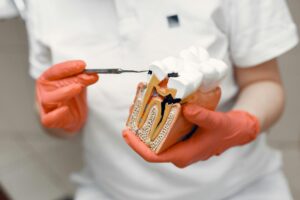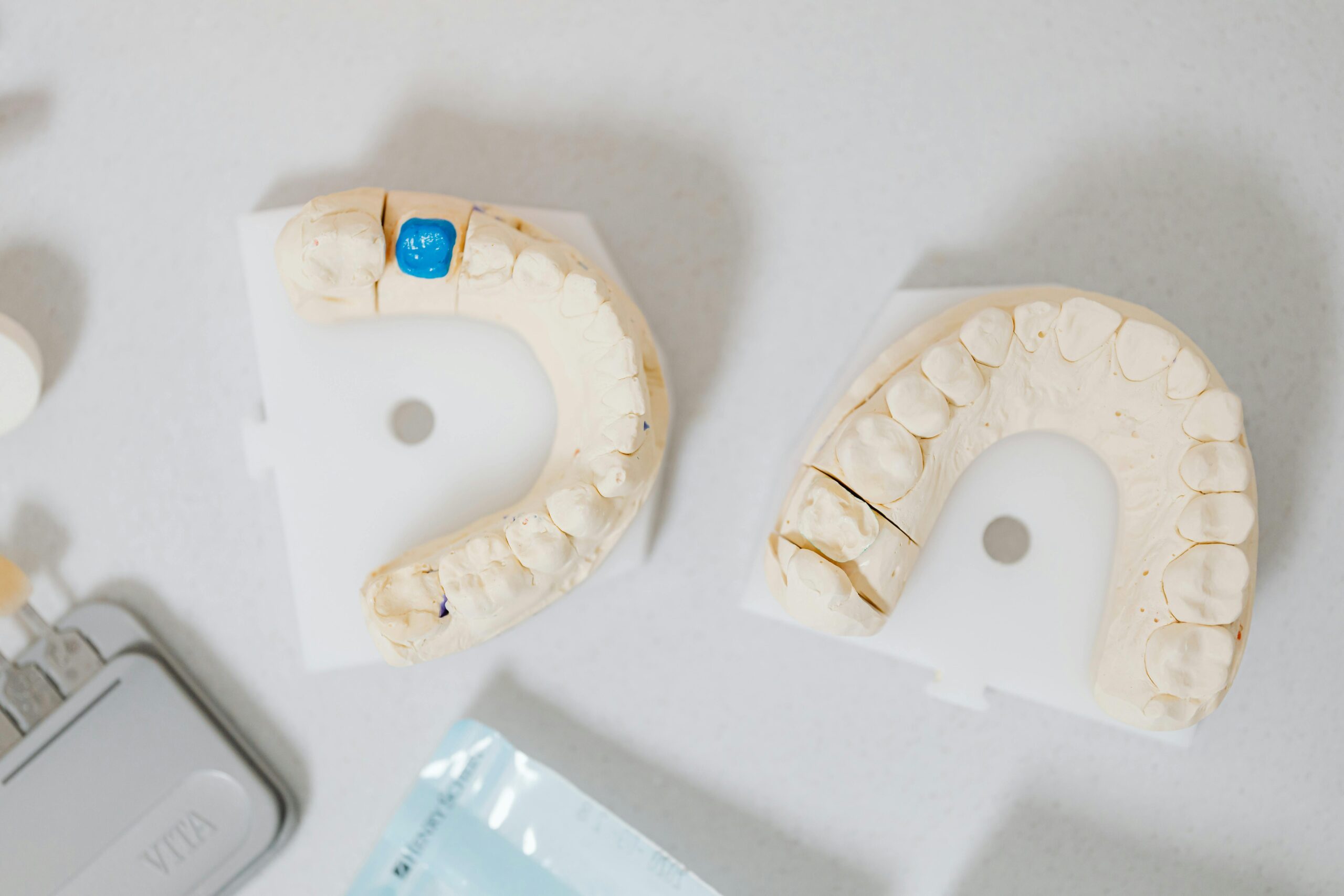Table of Contents
- Key Points
- Understanding the Enemy: How Cavities Form
- The Foundation: Proper Daily Oral Hygiene
- Nutritional Strategies for Cavity Prevention
- The Power of Fluoride and Natural Remineralization
- Professional Prevention: The Role of Regular Dental Care
- Restoration: When Prevention Isn’t Enough
- Special Considerations for High-Risk Individuals
- Creating Sustainable Habits
- The Long-Term Benefits of Prevention
- Partner with Your Powdersville Dental Team
- References
Key Points
- Tooth decay affects nearly half of all youth and only worsens with age.
- There are proven habits to lessen the prevalence of these conditions and improve dental health outcomes, as well as some dental procedures to treat and even reverse them.
- Understanding these tactics and approaches is central to optimizing oral health for every patient.
Tooth decay remains one of the most common chronic diseases affecting people of all ages. According to recent CDC surveillance data, the prevalence of dental caries among youth aged two to 19 years is almost 46 percent, with rates increasing dramatically with age.1 This staggering statistic underscores the critical importance of implementing effective prevention strategies early on and maintaining them throughout life.
As your trusted dentist in Powdersville, South Carolina, we understand that preventing cavities and tooth decay requires more than just occasional dental visits. It demands a comprehensive approach that combines proper oral hygiene, smart dietary choices, and regular professional care.
Many patients ask us about how to avoid tooth decay and cavities. The good news is that these conditions are entirely preventable when you consistently follow the evidence-based strategies described below.
Understanding the Enemy: How Cavities Form
Before diving into prevention approaches, it is essential to understand how cavities in teeth develop in the first place. Tooth decay occurs when harmful bacteria in your mouth feed on sugars and starches from food, producing acids that interact with tooth enamel. Over time, these acid attacks weaken the enamel, creating small holes or cavities.2 Without intervention, a decaying tooth can progress from a minor cavity to severe decay that requires extensive treatment or even tooth extraction.
The process is not immediate—it typically takes months or even years for a cavity to fully develop. This timeline provides multiple opportunities for intervention, which is why prevention is so much more effective and cost-efficient than treatment after decayed teeth have already formed.
The Foundation: Proper Daily Oral Hygiene
Many patients wonder, “Can you stop tooth decay when it starts?” The answer is yes—early intervention through proper care and professional treatment can halt the progression of decay in its initial stages. But first, it is important to understand the basics of good daily oral hygiene routines.
Brushing Technique and Timing
The cornerstone of cavity prevention lies in effective brushing habits. As your Powdersville dentist, we recommend brushing at least twice daily with fluoride toothpaste, but timing and technique matter significantly.
Brush for a full two minutes, ensuring you reach all surfaces of every tooth. Use gentle, circular motions rather than aggressive back-and-forth scrubbing, which can damage enamel and gums.
Morning brushing removes bacteria that accumulate overnight, while evening brushing eliminates food particles and plaque from the day’s meals. If possible, brush 30 to 60 minutes after eating rather than immediately, as your mouth’s pH is temporarily more acidic after meals, and immediate brushing could potentially damage softened enamel.
The Critical Role of Flossing
Many patients underestimate flossing’s importance in preventing tooth decay, but it is irreplaceable for cleaning between teeth where cavities commonly form. Daily flossing removes plaque and food particles from areas your toothbrush cannot reach. Proper flossing technique involves gently guiding the floss between teeth, curving it around each tooth’s base, and moving it up and down to clean the tooth surface and just under the gumline.
The Finishing Touch: Mouthwash
An antimicrobial or fluoride mouthwash can provide additional protection against cavity-causing bacteria. Rinse for 30 seconds after brushing and flossing to reach areas that might have been missed and provide an extra layer of fluoride protection (more on fluoride below).
Nutritional Strategies for Cavity Prevention
In addition to a daily cleaning routine, there are some diet choices patients can make to help stave off cavities and tooth decay.
Limiting Sugar and Acid Exposure
Diet plays a crucial role in preventing tooth decay and slowing its impact. Frequent consumption of sugary or acidic foods and beverages creates an environment where harmful bacteria thrive.
Limit sugary snacks, sodas, and acidic beverages like citrus juices. When you do consume these items, try to do so during meals rather than as standalone snacks, as your mouth produces more saliva during meals to help neutralize acids.3
Timing Your Eating Habits
The frequency of eating matters as much as what you eat. Each time you consume food or drinks containing sugars or starches, your teeth are under acid attack for up to an hour.4
Frequent snacking throughout the day means your teeth are constantly under siege. Instead, stick to regular meal times and limit between-meal snacking to a minimum of once a day.
Cavity-Fighting Foods
Incorporate foods that actively promote oral health into your diet. Dairy products like cheese and yogurt are rich in calcium and phosphorus, which help remineralize tooth enamel.
Crunchy fruits and vegetables increase saliva production and help clean teeth naturally. Sugar-free gum, particularly those containing xylitol, can help neutralize acids and stimulate saliva flow after meals.5
The Power of Fluoride and Natural Remineralization
Fluoride is nature’s cavity fighter, and it is one of the most effective tools in preventing tooth decay. This mineral, which is found in water, soil, rocks, and foods, helps remineralize tooth enamel, making it more resistant to acid attacks.6 Use fluoride toothpaste twice daily and consider additional fluoride treatments if you are at higher risk for cavities.
Many of our patients ask, “Can you repair a cavity naturally?” While established cavities require professional treatment, the early stages of tooth decay can sometimes be reversed through a process called remineralization.
When enamel begins to weaken but has not yet formed a hole, proper fluoride use, dietary changes, and excellent oral hygiene can help restore minerals to the tooth structure and halt decay progression. Your dentist in Powdersville SC can assess whether you might benefit from prescription fluoride treatments, professional fluoride applications, or fluoride supplements, particularly if your local water supply lacks the mineral.
Professional Prevention: The Role of Regular Dental Care
Regular visits to your Powdersville dentist are essential for cavity prevention. There are several aspects to this.
Routine Cleanings and Examinations
Professional cleanings remove plaque and tartar buildup that regular brushing and flossing cannot eliminate. During examinations, we can identify early signs of decay before they become problematic, allowing for minimal intervention rather than extensive treatment.
Most patients benefit from cleanings and checkups every six months, though some individuals with higher risk factors may need more frequent visits. Your dental team can assess your individual needs and recommend an appropriate schedule.
Preventive Treatments
Several professional treatments in particular can significantly reduce your risk of developing cavities in teeth. These include:
- Dental Sealants: These thin, protective coatings are applied to the chewing surfaces of back teeth, where decay often begins. Sealants are particularly beneficial for children and teenagers, but can also protect adult teeth.
- Professional Fluoride Treatments: In-office fluoride applications provide higher concentrations of fluoride than over-the-counter products, offering enhanced protection for patients at higher risk of decay.
- Customized Prevention Plans: Your dental team can develop personalized prevention strategies based on your individual risk factors, lifestyle, and oral health history.
Restoration: When Prevention Isn’t Enough
Sometimes, preventive measures are insufficient for stopping the onset of tooth decay and cavities. In these cases, we must turn to restorative interventions.
Can decaying teeth be restored? The answer depends on the extent of the decay. In most cases, yes—modern dentistry offers numerous options for restoring decayed teeth to full function and appearance.
For minor to moderate decay, dental fillings can effectively restore the tooth structure. More extensive decay might require crowns, inlays, or onlays.
In severe cases where decay has reached the tooth’s nerve, root canal therapy can save the tooth from extraction. Even teeth that seem beyond saving can sometimes be restored through advanced techniques, though prevention remains far preferable to treatment.
Even if prevention is out the window, the key is catching decay early through regular dental visits. Early detection allows for simpler, less expensive treatments and better long-term outcomes for your oral health.
Special Considerations for High-Risk Individuals
Some people are at higher risk of developing decaying teeth due to various factors.
Medical Conditions and Medications
Certain medical conditions, like diabetes, can increase cavity risk, as can medications that reduce saliva production. If you have a chronic condition or take medications that affect your oral health, discuss this with your dental team to develop appropriate prevention strategies.
Age-Related Factors
Children and older adults face unique challenges in cavity prevention. Children may need additional supervision and motivation to maintain proper oral hygiene, while older adults may deal with medications, medical conditions, or physical limitations that affect their oral care routine.
Lifestyle Factors
Smoking, frequent snacking, stress, lack of exercise, and diets that expose you to sugary or acidic substances can increase your risk. Identifying and addressing these factors is crucial for effective prevention.
Creating Sustainable Habits
Preventing cavities is not about perfection—it is about consistency. Start by focusing on one or two improvements to your routine rather than trying to change everything at once. Whether it is adding flossing to your nightly routine or switching to fluoride toothpaste, small changes can lead to significant improvements in oral health.
Track your progress and celebrate small victories. Consider using apps or reminders to help establish new habits until they become automatic. Remember that it typically takes at least 21 days to form a new habit, but it can be much longer, so be patient with yourself during the transition period.7
The Long-Term Benefits of Prevention
Investing in cavity prevention pays dividends throughout your life. Preventing tooth decay is far less expensive, time-consuming, and uncomfortable than treating decayed teeth. Strong, healthy teeth contribute to better overall health, improved nutrition, enhanced self-confidence, and reduced risk of more serious oral health problems.
Understanding that early decay can sometimes be reversed naturally through proper care, while established cavities require professional treatment, empowers you to take appropriate action at every stage of oral health.
Partner with Your Powdersville Dental Team
As your dentist in Powdersville South Carolina, we are committed to helping you maintain optimal oral health through evidence-based prevention strategies. Every patient’s needs are unique, and we work closely with you to develop personalized prevention plans that fit your lifestyle, risk factors, and goals.
Regular communication with your dental team ensures that your prevention strategy evolves with your changing needs. Whether you are dealing with new medications, life changes, or simply want to optimize your current routine, we’re here to provide guidance and support.
Remember, preventing cavities is a lifelong commitment, but it is one that pays enormous dividends in terms of health, comfort, and quality of life. By implementing these dentist-approved strategies and maintaining regular professional care, you can keep your smile healthy and cavity-free for years to come.
Do not wait for decaying teeth to become a problem. Take action today to protect your oral health. Contact our Powdersville dental office to schedule your next preventive care appointment and discuss personalized strategies for keeping your teeth healthy and strong.
References
- Eleanor Flemming, Ph.D., D.D.S., M.P.H., and Joseph Afful, M.S., “Prevalence of Total and Untreated Dental Caries Among Youth: United States, 2015–2016,” National Center for Health Statistics, Centers for Disease Control and Prevention, April 2018, https://www.cdc.gov/nchs/products/databriefs/db307.htm.
- “Overview: Tooth decay,“ Institute for Quality and Efficiency in Health Care, September 2023, https://www.ncbi.nlm.nih.gov/books/NBK279514/.
- Marzio Frazzoni, Leonardo Frazzoni, Mentore Ribolsi, et al., “Esophageal pH increments associated with post-reflux swallow-induced peristaltic waves show the occurrence and relevance of esophago-salivary reflex in clinical setting,” Neurogastorenterol and Motility, July 2021, https://pubmed.ncbi.nlm.nih.gov/33471424/.
- “Diet and my teeth,” Oral Health Foundation, retrieved on May 28, 2025, from: https://www.dentalhealth.org/diet-and-my-teeth.
- Chandrashekar Janakiram, C V Deepan Kumar, and Joe Joseph, “Xylitol in preventing dental caries: A systematic review and meta-analyses,” Journal of Natural Science, Biology and Medicine, June 2017, https://pmc.ncbi.nlm.nih.gov/articles/PMC5320817/.
- “The Story of Fluoridation,” National Institute of Dental and Craniofacial Research, December 2024, https://www.nidcr.nih.gov/health-info/fluoride/the-story-of-fluoridation.
- Jocelyn Solis-Moreira, “How Long Does It Really Take to Form a Habit?” The Scientific American, January 2024, https://www.scientificamerican.com/article/how-long-does-it-really-take-to-form-a-habit/.
Dr. Greg Ayers has over 35 years of experience running his own dental practice. He is the CEO and clinical director of ProGrin Dental and Cosmetics, which he and his son founded in 2012. Dr. Ayers is a graduate of the Medical University of South Carolina’s College of Dental Medicine, then furthered his dental education at the Pankey Institute for Advanced Dental Learning. Dr. Ayers is also a graduate of the acclaimed Nash Institute for Dental Learning, and he currently serves as a teaching mentor at the Institute, working with doctors and healthcare professionals from around the world. Dr. Ayers has also authored two books: “The Service Prescription – Healthcare the Way it Was Meant to Be,” and a motivational book entitled “SPARK, Igniting Your Dreams.”

